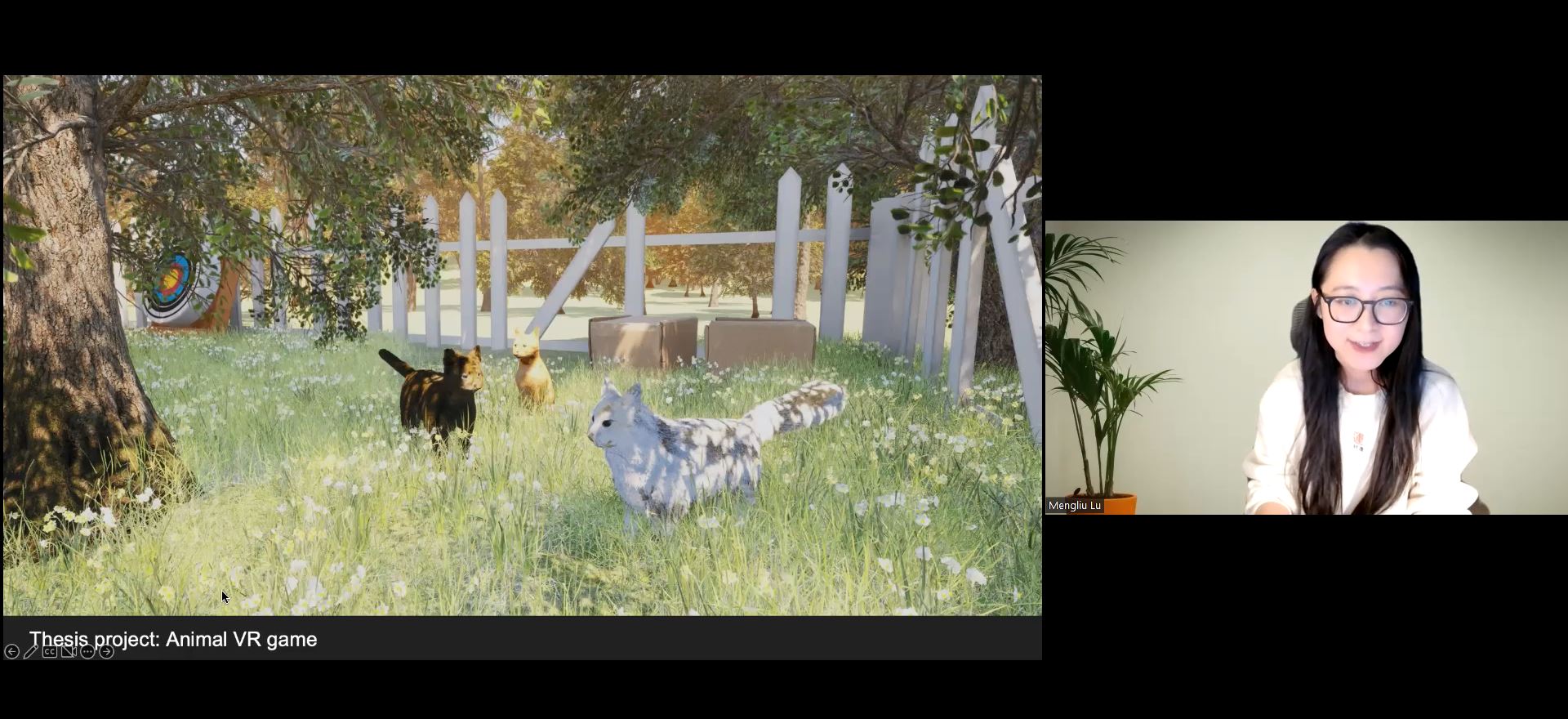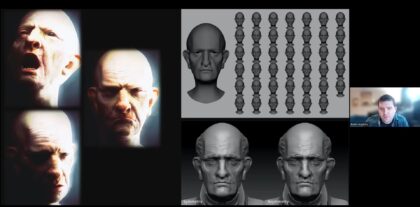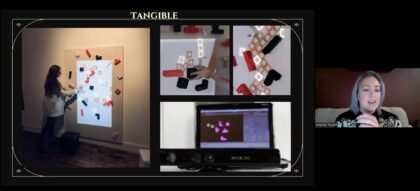From van Gogh to VR

Paul Cotnoir, the dean of Clark’s Becker School of Design & Technology, asked the audience to imagine experiencing Vincent van Gogh’s “Starry Night” as more than just a painting and examine the stars in the sky as the artist himself did more than a century ago.
Cotnoir delivered the challenge at an Oct. 27 virtual panel where BSDT professors, students, and alumni spoke about the benefits of immersive art. Immersion is the practice of adding another dimension to works of art, something BSDT faculty and students aim to achieve in game and design projects. On a larger scale, immersive experiences — featuring work by Monet, van Gogh, and other artists — have become increasingly popular in cities across the world.
Panelist Mengliu Lu ’22, MFA ’23, is working on a thesis project that allows players to don a VR (virtual reality) headset and see the world through the perspective of big cats on the savanna.
“I found that when players interact with animals in immersive virtual environments, there are strong positive effects, such as increased environmental awareness, positive behavioral changes, and even improved empathy,” she said.
Earlier this year, Lu helped digitize a Boston opera performance. She created digital costumes for the three main characters of “Cosmic Cowboy,” a sci-fi opera presented by White Snake Projects. The performance conveyed a story about love and power through a blend of virtual and live-stage performances.
The gaming industry continues to evolve with immersive art, including VR technology that challenges players to step outside of their comfort zone. Meanwhile, art galleries and exhibits are utilizing new digital technologies to create a lasting impact on their audiences.

Matthew Hopkins, a technical artist at Rockstar Games and 2012 graduate of Becker College, discussed his thesis project, “The Omitted Memento.” He created a digital portrait of an older man with facial expressions that change. The longer a person studies the piece, the man’s expression turns positive. If the portrait is left unexamined, however, the man will begin to frown. The mechanics allow each person to have a unique experience as they interact with the portrait.
“I discovered how to create a character the audience can feel empathy for,” Hopkins said. That process involved sketching rough concepts for the character and then switching to a more realistic design to emphasize the expressions. The portrait had more than 40 unique expressions by the time Hopkins was done.

Professor Amanda Theinert, director of the MFA program, recalled how she bridged the gap between the digital and physical worlds for her thesis project at the School of Visual Arts in Manhattan. The project, called “Tangible,” featured a Velcro wall with Tetris-like pieces that people could move around as well as digital blocks displayed via projector. As people maneuvered the physical pieces, an Xbox Kinect would relay the movements digitally. If someone were to remove a piece from the wall that a virtual block was sitting on, the virtual block would fall.
“My favorite part was not giving any instructions whatsoever and just seeing what people do with it,” Theinert said.
Professor Terrasa Ulm creates art to help participants cross what’s known as the virtual veil, the space between the physical and digital worlds. Ulm talked about how she created an exhibit called “Entangled,” which brought the audience into a set with a sofa, drawers, and pictures, as well as two wireless headsets with synced audio. The addition of audio created an immersive experience that encouraged curiosity, she noted. Each person explored the space differently, guided by the audio.


